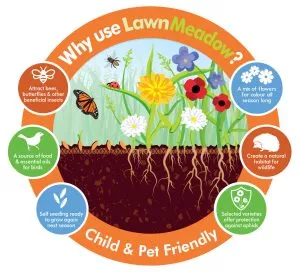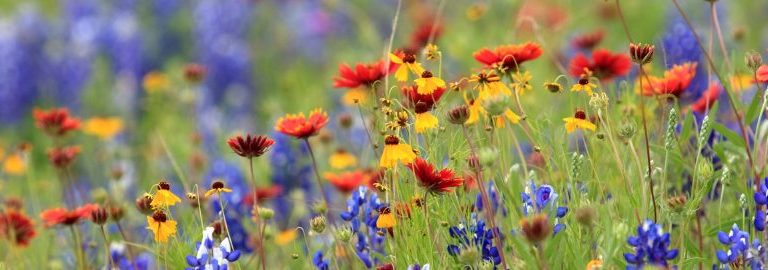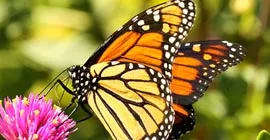What is a lawn meadow?
A lawn meadow is a blend of wildflowers and lawn seed which creates a beautiful wild meadow. Not only will it display an array of colours but will also encourage bees, butterflies and other beneficial insects to your garden.
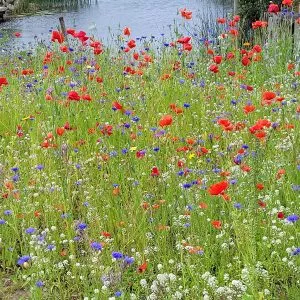
How to create a lawn meadow?
Westland Lawn Meadow is the perfect blend of wildflowers, lawn seed and seed sowing granules. The carefully selected varieties offer natural protection against pests such as Aphids, whilst others are self seeding for birds to eat. Whatsmore, it is also natural and child and pet friendly too.
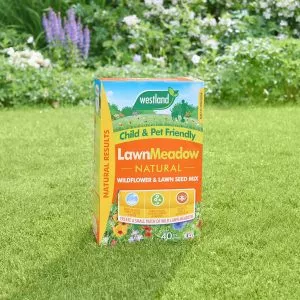
What wildflowers and grasses does Lawn Meadow contain?
- Red Poppy (Papaver rhoeas) – Flowers between June-September. A great source of pollen for attracting bees.
- Perennial Flax (Linum perenne) – Flowers in June. Once this flower goes to a seed head it becomes a great source of food for birds.
- Pot Marigold (Calendula officinalis) – Flowers in June. Offers natural protection against aphids but will also attract pollinators such as hoverflies and lacewings.
- Shasta Daisy (Leucanthemum x Superbum) – Flowers between June – October. Great source of pollen and nectar for attracting bees and butterflies.
- Yarrow (Achillea millefolium) – Flowers between May – August. Attracts ladybirds due to its flat-topped flower and pollen content. Ladybirds are natural predators for aphids.
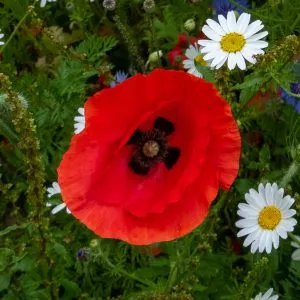
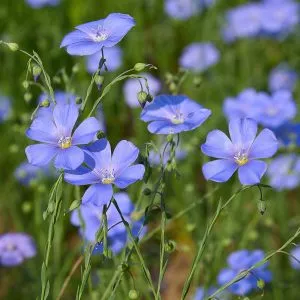
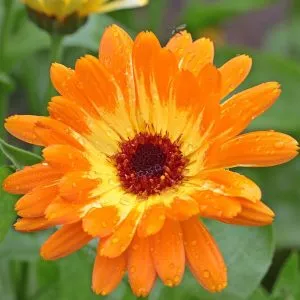
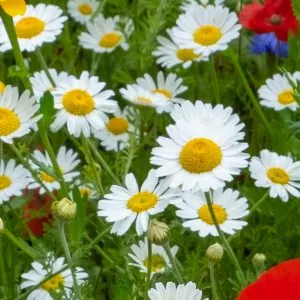
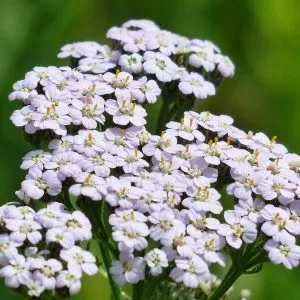
as well as;
- Borage (Borago officinalis)
- Scarlet Flax Seeds (Linum grandiflorum rubrum)
- Paterson’s Curse (Echium plantagineum)
- Corncockle (Agrostemma githago milas + Wild Type)
- Cornflower (Centaurea ʻBlue Boyʼ + Wild Type)
- Alyssum (Lobularia maritima benthamii)
and grasses ideal for a lawn meadow in your garden
When to use
- For Summer flowering sow from March to May and for Spring flowering (following year) sow from August to October.
- For best results apply to bare soil for better seed-soil contact. Ideal for use after scarification.
- Do not apply when the soil is dry, during freezing conditions or when frost is expected
How to use
- This pack treats 40m2 which is equal to four car parking spaces. 1 parking space = 2 x 5 metres = 10m2
Preparation
- Remove any large stones and weeds.
- Dig over bare soil and level out or scarify existing lawn until bare soils areas can be seen.
- If soil is really dry, water 24 hours before sowing the seeds.
- Shake the pack and rotate at least three times before use to mix the contents.
Scatter (Sow)
- Scatter the seed mix at a rate of 70g/m2 or for denser flowers scatter at a rate of 140g/m2. One handful is approximately 35g. To ensure even coverage, sow in a cross wise pattern.
- Once scattered, lightly rake to incorporate seeds into the soil surface.
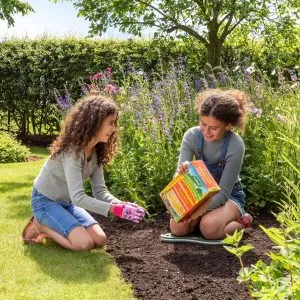
Water
- Water daily, gently at first to avoid washing away the seeds. Preferably in the evening until seedlings appear, then as required depending on weather conditions.
To finish
- Lawn Meadow does not require frequent mowing. Instead, only cut at the end of the season (September/October).
- Cut to soil level when dry conditions allow, and leave clippings on top of the cut area for 7-10 days. This will allow any seeds to fall back down onto the soil, ready to grow next year.
What to expect
- After two weeks, first green shoots should appear.
- Seedlings will develop into young plants after four weeks.
- After 8-12 weeks first flowers will start to appear.
- Results may vary depending on rainfall, temperature and date of sowing (above timescale based on spring sowing).
- Wildflowers will flower between April and October.
- Flower heights will range from 20-90cm.
Children and pets can use the lawn after application. It is good practice to wash hands and skin after use. It is also always a good idea to store product away from children and pets in a dry, frost-free place.
Why use Lawn Meadow?
